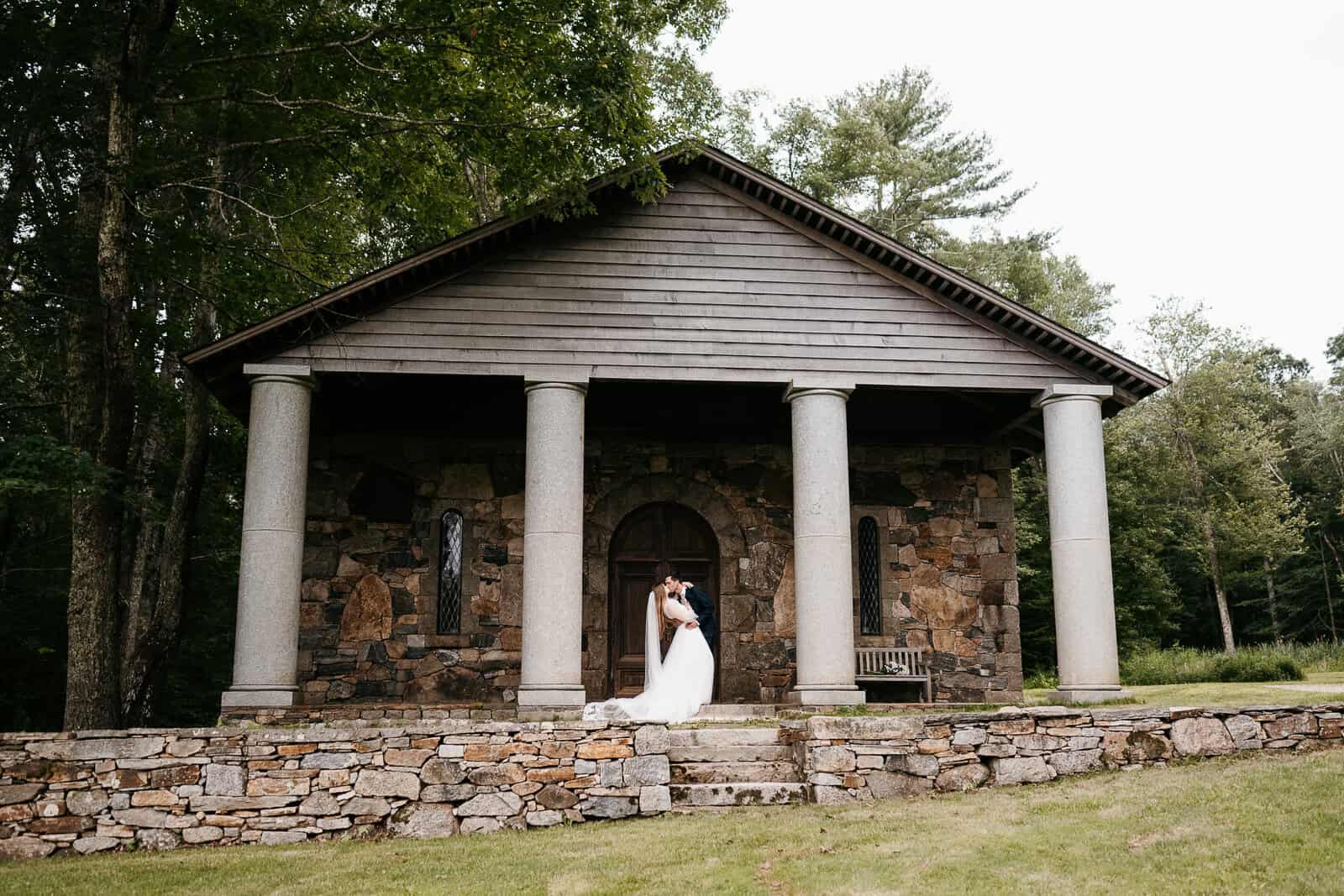The Ultimate Checklist: How to Plan a Wedding in 6 Months (Without Losing Your Mind)
Planning a wedding in six months is not only realistic, it can be refreshing. A tighter timeline trims decision fatigue, forces focus, and keeps momentum high. Couples on a fast track often report fewer second guesses, clearer priorities, and a celebration that actually looks and feels like them.
You don’t need every bell and whistle. You do need clarity, a solid plan, and a willingness to let good decisions stand without revisiting them ten times. Think of it as a sprint with scheduled water breaks.
The mindset that keeps you sane to plan a wedding in 6 months
Speed favors focus. Start by agreeing on what matters most to both of you, then let those choices steer every downstream decision. If a detail won’t be remembered a year from now, it probably doesn’t deserve your Saturday afternoon.
Decision speed is your superpower. Commit to practical timelines: make the choice, record it, move on. Use a weekly check-in with your partner to keep both the tactical and emotional threads aligned.
Delegation is not a luxury on a compressed schedule. It’s the system. Invite trusted helpers early and treat them like teammates, not last-minute emergency contacts. Give clear roles and permission to act.
- Pick your must-haves: Venue, food, music, photography, and an officiant form the backbone. Set these first.
- Accept good-enough decisions: When two options meet your standards and budget, choose the first available and stop shopping.
- Skip low-impact details: Fonts, favors, and minute décor tweaks can soak up hours. Default to simple or skip entirely.
- Ask for help early: Assign research, pickups, and assembly tasks. Trust your people to execute.

Venue: The Carolina Barn
What gets booked first on a short engagement
Start with the day, the place, and the people who make the event happen. That means venue and date, followed by core vendors: planner or coordinator, caterer, photographer, music, and officiant. Popular options book up months in advance, so widen your aperture. Weekdays or Sundays can open excellent spaces and pricing. Non-traditional venues (art galleries, restaurants, private estates) often have more availability and built-in ambiance.
Attire needs a head start. Off-the-rack or sample gowns and quick-turn tailoring keep timelines intact. Suits and tuxes are straightforward, especially if you streamline colors and rentals. If you want custom or intricate alterations, lock those in early.
On a six-month clock, many couples skip formal save-the-dates and send invitations earlier instead. That single change frees budget and buys you time. Your wedding website can fill in details and collect RSVPs efficiently.
A six-month sprint plan
Your calendar is now a strategic asset. Batch decisions by category, keep deposits and deadlines visible, and protect one or two evenings a week as planning sessions. Send invitations around three months out with an RSVP deadline roughly three weeks before the wedding. That cadence gives vendors the numbers they need without last-minute panic.
| Timeframe | Priority moves |
|---|---|
| 6 months out | Set budget and guest count; choose date and book venue; secure core vendors (planner/coordinator, photographer, caterer, music, officiant, florist); create wedding website and registry; begin attire shopping; reserve hotel blocks and transportation. |
| 5 months out | Book rehearsal dinner site; finalize ceremony plan with officiant; design or order invitations; lock remaining vendors (rentals, lighting, hair and makeup); taste and shape the menu; schedule beauty trials; begin collecting addresses. |
| 4 months out | Order bridesmaid dresses and arrange groomswear; confirm ceremony music and readings; meet florist for designs; map reception layout; start seating framework; move DIY items from idea to done. |
| 3 months out | Mail invitations; set RSVP deadline; confirm menu and cake; create photo shot list; book final fittings; purchase wedding bands; finalize honeymoon reservations; plan rehearsal dinner flow. |
| 2 months out | Apply for marriage license (check local timing); track RSVPs and follow up; lock seating chart and floor plan; confirm vendor logistics and timelines; schedule day-of beauty appointments; organize décor deliveries and signage. |
| 1 month out | Final dress and suit fittings; confirm guest count with venue and caterer; prepare payments and gratuities; pack for honeymoon; build a wedding-day emergency kit; delegate day-of responsibilities to your team. |
| 2 weeks to week-of | Share the final timeline and contact sheet with all vendors; provide photographer with must-have shots; finalize music cues; rehearse; distribute place cards and charts; breathe. |
| Day before / day of | Drop off personal items; exchange gifts with wedding party or parents if planned; hydrate, eat, and let the team run the plan. |
Tools that shrink your to-do list
A good system cuts stress in half. If you like digital, use a planning app with a built-in checklist, budget, vendor messaging, and RSVP tracking. The Knot, WeddingWire, and Zola each offer robust, free app ecosystems. Prefer a visual board? Trello and Notion make it simple to assign tasks, store contracts, and link timelines.
Even a shared Google Calendar can be a small miracle when vendors, fittings, and payments pile up. If paper helps you think, a binder with tabs for vendors, contracts, and receipts keeps the physical trail intact. There is no single best tool; the best one is the one you will actually use every week.

Venue: The Lodge
Delegation playbook
You are not the entire department. Give family and friends discrete, outcome-based tasks and clear due dates. Accept that different is not worse when the job gets done. A short timeline rewards trust.
- Address collection and RSVP tracking
- Vendor research calls and quote gathering
- DIY assembly line for programs or welcome bags
- Transportation and hotel coordination for guests
- Rehearsal dinner set-up and décor
Budget realism on a fast timeline
A clear, line-item budget keeps decisions grounded. Include taxes, fees, gratuities, alterations, postage, rentals, and a 5 to 10 percent buffer for surprises. Short engagements can save money by opening weekday or off-peak options, trimming guest counts, and leaning on venues with built-in décor.
Watch for rush fees on attire or stationery. Ask vendors for payment schedules and set reminders the day they are signed. If budget tension creeps in, revisit your must-have list and trade down in lower-impact areas. A great band with simple centerpieces often feels better than the reverse.
Package venues and all-inclusive options can compress timelines and reduce coordination complexity. If you choose a la carte vendors, assemble a quick contact sheet with names, arrival times, cell numbers, and final balances due. Keep digital copies of contracts in one folder for easy reference.
Handling stress spikes without losing momentum
Compression amplifies feelings. Time pressure, family input, and constant decision-making can drain even the most organized couple. Build in micro-breaks and simple routines that safeguard your energy. Ten minutes of breathing or stretching between tasks can reset your nervous system. A weekly planning date with music and takeout can make the checklist feel lighter.
Set guardrails for social media. Inspiration is fuel until it turns into comparison. Mute accounts that trigger FOMO and return to your written priority list when doubt creeps in. Sleep and hydration sound basic because they work. So does asking for help at the first hint of overload.
If rumination kicks up at bedtime, keep a notepad by the bed and write down the next action. That single step often quiets the loop. If anxiety starts to feel heavy, a session with a counselor can equip you with tools and perspective.
When a pro is the smartest spend
Speed multiplies the value of experience. A full-service planner or a month-of coordinator can compress vendor sourcing, troubleshoot logistics, and manage the timeline so you can focus on the relationship. Even a single consulting session can help you set priorities, select the right vendors, and avoid common pitfalls.
If a planner is not in the budget, consider an all-inclusive venue where food, rentals, and staffing are bundled. Another middle path is hiring a day-of coordinator who enters a month out, builds the schedule, and runs the show. Couples consistently report that this is one of their best investments on a short timeline.
Quick wins that create momentum
Small, early victories build confidence. Lock the venue and core vendors first. Order attire with realistic tailoring windows. Choose a simple, cohesive color palette so any last-minute adds still fit the look. Decide on one or two signature moments that make you light up, then let the rest be straightforward.
A tight plan can still feel personal. Handwritten notes at each table. A dessert that nods to your first date. A ceremony reading from a beloved grandparent. Keep meaning front and center and the day will feel rich even if the linen shade isn’t precisely the one you pinned.
Case notes from fast-track weddings
One couple picked a date nine weeks out. They completed vendor bookings in two weeks by widening the search to weekdays and trusting their families with décor and logistics. Their rule was simple: if a decision could be made in under ten minutes, they made it on the call.
Another pair chose a late-fall date six months ahead. They prioritized the band, photographer, and a restaurant venue with great lighting. They skipped save-the-dates, sent invitations at three months, and used their website for all updates. Their table numbers were handwritten by a friend the night before and looked fantastic.
A winter wedding came together in just over a month when the couple committed to a single venue that handled ceremony and reception. The planner offered vendor referrals, and the couple chose from available options without overthinking. It snowed, just as they’d hoped, and the photos were unforgettable.

Venue: Falls Creek Farm
A few guiding principles you can trust
The calendar is short, yet your options are wider than you think. Flexibility on day-of-week and venue type opens doors. Decision speed is your ally. Delegation turns stress into teamwork. Tools and timelines keep you on track. And the parts you remember most are rarely the most expensive ones.
Most of all, the point is the marriage. Keep that at the center, and six months is more than enough.
Conclusion
For help turning your proposal vision into reality, explore the stunning venues at CSEVenues. Let us help craft the perfect moment where your love story takes a magical leap.
We invite you to explore each of our exceptional properties in detail athttps://csevenues.com/venues/and discover a CSE Venuethat is perfectly suited to host your next unforgettable occasion.


